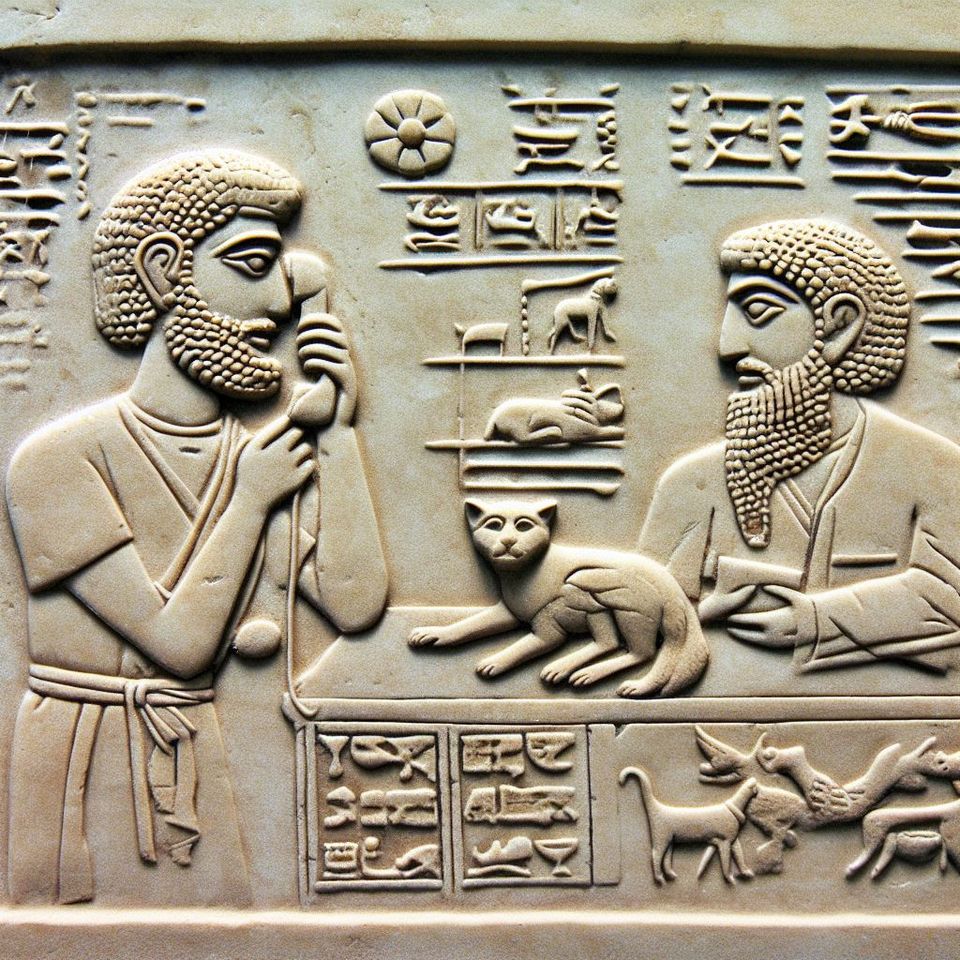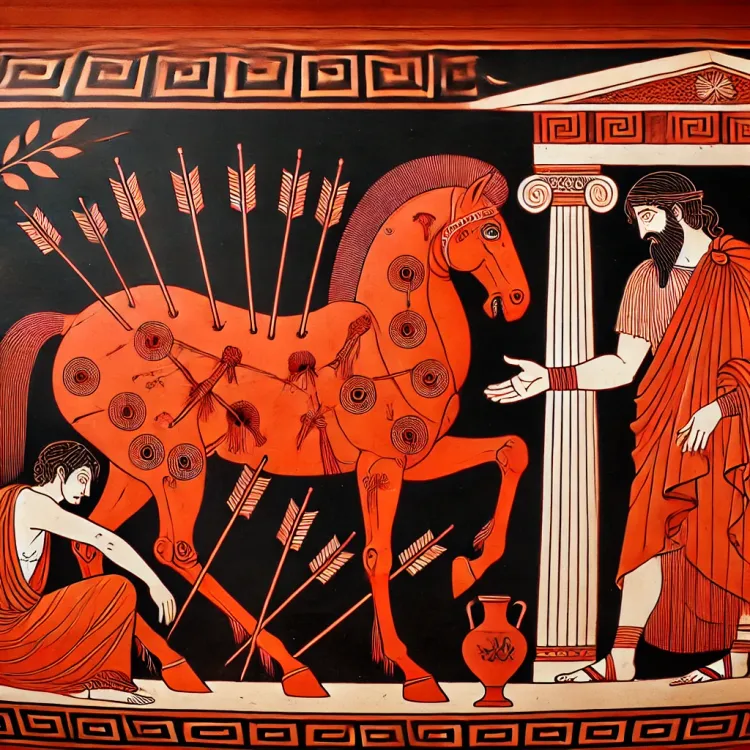Ten Titillating Tidbits from Veterinary History

I've got an exciting side project going (more details to come), and part of it has involved researching the history of veterinary medicine. If that sounds boring, you're 96% correct!
However, scattered in that bulk of dates and old dead men there are some pretty interesting nuggets. Here are ten fascinating things I learned about the history of veterinary medicine, in chronological order.
1... The (True) Oldest Profession
There's a 6,000 year old text from China where a goddess got tired of making humans by hand, so she taught them how to make new humans themselves (it works the way you think it does). They multiplied, but then started complaining about how hard it was to get food, so the goddess's brother (or husband, whatever, don't judge) domesticated some animals and then taught some humans how to be "horse priests" (= "vets"). They used acupuncture and medicinal herbs, so would have been very popular in Portland.
2... Ur... Should We Call Them "Forceps"?
The first "veterinarian" we know by name might have invented tweezers. Maybe. He at least is holding a pair and was known to have lanced animal abscesses with them about 4,000 years ago in Sumeria. "Dr. Urlugaledinna" worked for a guy who's head is owned in New York and whose body is owned in Paris. Well, a statue of him, at least.
3... Ancient Rabies Laws
Prevention is great, but fines for horrendously irresponsible behavior can also work. The Mesopotamian town of Eshnunna pioneered pecuniary punishments for owners of rabid dogs. If your rabid dog bit someone, and they later died of rabies, you owed forty shekels. Fifteen shekels if it was a slave, and very little if it was a Nickelback fan. Nowadays, widely available and effective rabies vaccines barely cost any more than two shekels.
4... Cost of Care is Rising. And Confusing!
You want to know what veterinary surgery cost back in the day? Well, if it was Hammurabi's day it would have been a sixth of a shekel. But only if it was successful (that is old school). Oh yeah, and only if it was on an ox or an ass. I don’t know if doing surgery on an ox’s ass compounds the fee or how the math on that works.
5... Fear Certified!
The first known veterinary hospital in the world was established c. 350BC by a Vedic King who murdered his brothers, used to (personally) torture people, and launched a genocidal war that slaughtered possibly up to 100,000 people. But then he felt bad and became a vegetarian. And opened a hospital for animals. But since he also founded a prison called “Ashoka's Hell-on-Earth”, maybe he rates ethically as the Mars Veterinary Health of his day.
6... Early Entrance Requirements
You had to be baptized to get into the first veterinary school. That was the only requirement. Well, you had to be able to read too, but only at an 11-year old level, because there was an 11-year old in the first class in 1761. Class was held in an old bar by a guy who used to teach music and manners to French nobility. I'm happy to report music is still a strong component of the veterinary curriculum.
7... The Future is Female, But The Past? Eh...
Did I mention that you had to be male? It wasn't an "official" requirement, but not until 135 years later did a woman graduate from vet school: Marija Kapčević of Ukraine in 1897. In the 126 years since, women have gone from <0.1% of veterinary graduates to more than 66% of the workforce (in the US, at least). And many aren't even baptized.*
8... Five and a Half Men
Speaking of The Patriarchy: There have been at least five “Fathers of Veterinary Medicine”*** throughout the ages, but no references to any “Mothers of Veterinary Medicine”. We're insecure, what can I say? If you're playing along at home, they were: Urlugaledinna, Publius Flavius Vegetius Renatus, Shalihotra, Absyrtus, Claude Bourgelat, and Harlan Steele.
9... She Persisted
Aleen Cust wanted to be a vet ever since she was a child. Except she was part of the English aristocracy at the end of the 19th century and her family would have been too embarrassed for her to go to vet school. So she changed her name, got in, and kicked ass, but was denied a license because... people were stupid. Women couldn't be licensed vets in the UK until 25 years later. She finally gained recognition from the Royal College of Veterinary Surgeons (such a pretentious name, btw), but by then was so sick that she could only practice for two more years before she ended up retiring, then died in Jamaica.
10... Rinder Me This...
In 2011, the second disease to ever be completely eradicated (after smallpox) was rinderpest. It's kinda easy to not take this seriously, since it's dead, and it can be harmlessly mocked like the pre-vegetarian version of Ashoka the Great. However, this disease not only killed hundreds of millions of cattle and wildlife, it also led to severe disruptions in ecosystems, extreme human suffering and nearly wiped out whole societies in certain parts of Africa. Vaccines work, dude.
That's all I've got for now, but maybe I'll revisit this topic another time. If you want actual information on all of this,, check out this timeline and a nice article on the history of vet med.
*Over the same time, the world's horse population might have from >100 million, down to maybe 25 million, then back up to maybe >50 million? You know, tractors and war and stuff. I don't know, it's really hard to estimate. I thought this would be a cooler tidbit, but it's really just a historical footnote.chat




Comments ()